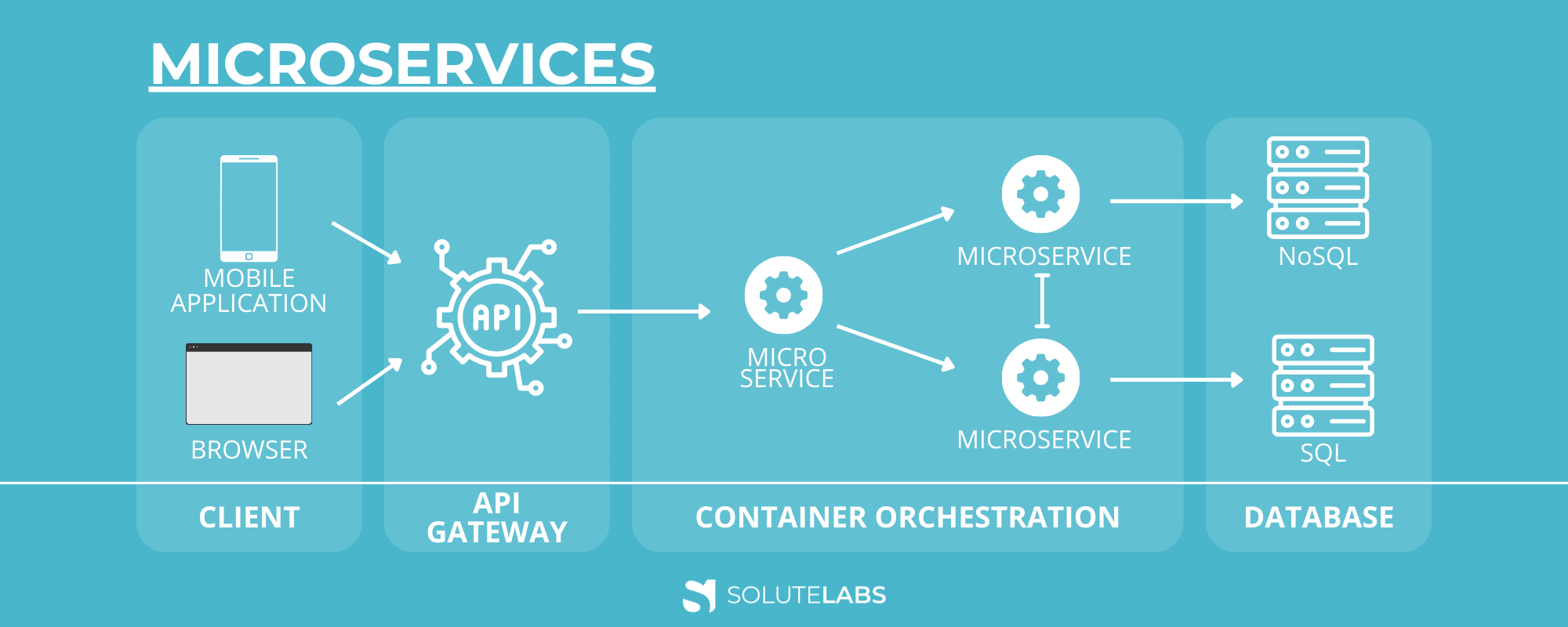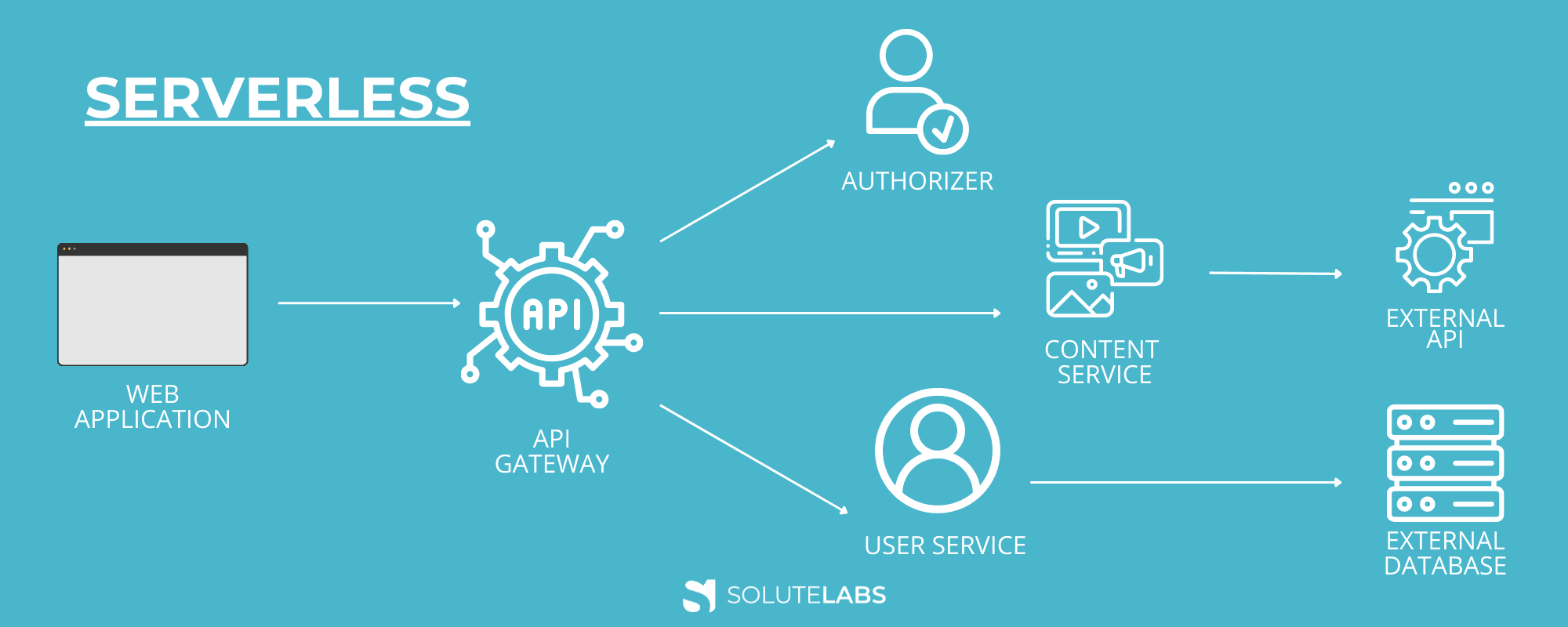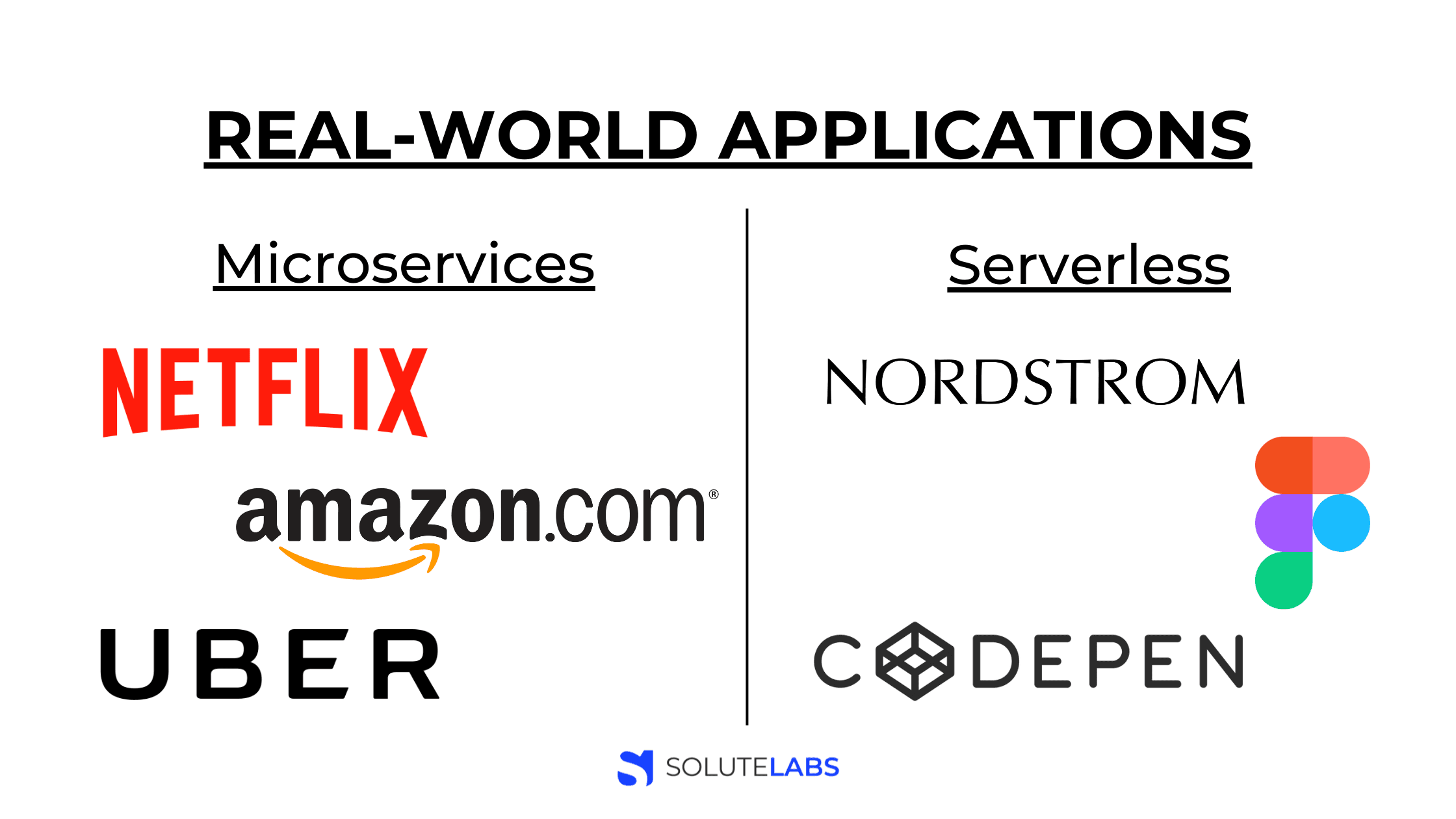Today, the market is flooded with options. The big data trends have made it possible for businesses to choose the right tools and technologies for their operations.
There are currently two architectures dominating the software development space for a while now—microservices and serverless. Cloud adoption has rapidly grown in recent years, and with it, there are a lot of discussions around this technology. Due to their dynamism and agility, these are the preferred ways of developing software.
Each architecture has its strengths and weaknesses, so businesses must choose the right fit for their needs. In this article, we'll discuss both architectures and which one business should choose.
What is a Microservice?
Microservices are a software architecture style that structures an application as a collection of loosely coupled services.
A microservice is a small, autonomous, self-contained unit that can be developed and deployed independently. It can also be scaled independently without affecting the other services in the system or application. This microservice approach makes it easier to manage complex applications and makes it simpler to scale them as needed.

An architectural framework like this is advantageous because if one microservice gets corrupted or needs maintenance, it's easier to fix without affecting the other services. This, in turn, keeps the overall functionality from being affected.
Microservices Architecture is an emerging architectural pattern that's becoming increasingly popular. It's not just a new way of building applications; it's also a new way of thinking about how applications fit together.
There are a few different types of microservices that are commonly used:
The first type is the stateless microservice, which does not maintain state information. This type of microservice is typically used for tasks that can be performed without any need for persistent data.
The second type is the stateful microservice, which does maintain state information. This type of microservice is typically used for tasks that require data to be persisted, such as database operations.
Also, Read: Microservices in NestJS: How to build it?
What is Serverless Architecture?
Serverless architecture is a cloud computing paradigm that enables developers to build applications and services without having to provision or manage servers. In a serverless architecture, all the backend infrastructure is managed by a third-party provider, and developers only need to write and deploy code.
Serverless architectures are event-driven and can be triggered by various events, such as a user action or a change in data. They are also highly scalable, as the third-party provider can automatically spin up new instances of the code to handle increased traffic.

One of the main benefits of using a serverless architecture is that it can help reduce costs, as developers only pay for their resources. Additionally, serverless architectures can make deploying and managing applications easier, as the third-party provider manages all the infrastructure.
Serverless architecture is a new way of building applications that has recently gained popularity. It works from two perspectives – FaaS (Function as a Service) and BaaS (Backend as a Service).
With FaaS, you can build and run applications without worrying about provisioning or managing servers. You must write your code and deploy it to a FaaS platform like AWS Lambda. The FaaS platform will then run your code and scale it as needed.
With BaaS, you can use backend services without managing them yourself. This includes services like storage, databases, authentication, and more. BaaS providers like AWS Amplify offer easy-to-use SDKs and CLI tools that make it easy to start with BaaS.
Both FaaS and BaaS have their advantages and disadvantages. Yet, they offer a new way of building more scalable and cost-effective applications than traditional methods.
Also, read: Authentication and Authorization in Microservices Architecture
Key differences between Microservices and Serverless Architecture
1. Approach
The development of microservices requires the formation of a team responsible for its deployment, support, and maintenance. This team can be composed of in-house resources or through outsourcing. The team will monitor the microservices' architecture, computing, and safety.
Serverless architecture is a type of computing that relies on a third-party vendor instead of the company itself. With serverless architecture, the cloud vendor takes care of all internal operations, which include developing, securing, and maintaining the server space.
A serverless architecture approach can help reduce project costs because the company doesn't have to invest in storage or hardware. There are also no expenses related to hiring and onboarding new employees.
2. Cost
Initially, developing microservices may be more costly. You need several teams to manage the project, and setting up relations between the components requires time and careful planning.
Microservices rely on in-house resources and support for development and maintenance rather than third-party resources. Thus, companies don't have to worry about vendor lock-in with this positive approach.
On the other hand, serverless architecture can help cut business costs. When companies switch to using serverless architecture, they often find that they can save money on resources by sharing them with other clients of the same third-party vendor.
It's possible to share resources because the vendors distribute servers among many clients, making it more affordable for businesses who subscribe to their services. You may also save on human resources expenses by not having to hire specialist server and hardware engineers.
3. Runtime
Serverless functions have a set time limit that they can run for, known as their runtime. Every provider has different limitations on how long a function can run - on AWS Lambda, for example, a function can run for 15 minutes. The reason for this is that functions are meant to be short-term processes that use up minimal RAM.
Microservices have an advantage over serverless architectures because vendors' requirements do not limit them to runtime, storage space, and RAM. This is especially beneficial for complex, long-term operations that involve storing and manipulating huge amounts of data.
4. Technique
The microservice architecture is more distributed, where each service is its self-contained unit. This can make development and deployment more complex and provide more flexibility and scalability.
On the other hand, serverless architecture is more focused on individual functions or pieces of code that are executed in response to events. This makes it simpler to develop and deploy but can limit the flexibility and scalability of the overall system.
5. Real-World Application of Microservices
Netflix: Netflix is one of the most popular streaming services in the world, with more than 223 million subscribers in over 190 countries. It uses a microservice architecture for server maintenance, reliability, and improvement recommendations.
Amazon: Amazon is one of the biggest online retailers in the world and uses microservices to power its website and mobile app. Its platform-as-a-service (PaaS) offering, AWS Elastic Beanstalk, uses microservices to manage cloud applications quickly and easily without having to manage servers or databases.
Uber: Microservices architecture manages all business processes, such as passenger management, billing, notifications, and many more.
6. Real-World Application of Serverless:
Nordstrom: The shopping website decided to build its framework based on serverless architecture. By using serverless, the website was able to build an event-based application, allowing for more features to be added.
Codepen: A social development platform that helps front-end developers and designers build websites run by a one-person DevOps team. Codepen uses serverless technology to do the heavy lifting, so you can focus on creating a great user experience.
Figma: Serverless architecture allows users and developers to focus on their projects by taking file management out of the equation. This way, users can collaborate on one design while developers focus on coding rather than worrying about file management.

Also, Read: Monolith vs Microservices Architecture: A Detailed Comparison
Which one should businesses choose: Serverless architecture or Microservices architecture?
A serverless architecture best suits applications with irregular or unpredictable traffic patterns. Because there are no servers to maintain, this architecture is very cost-effective. It is also very scalable because additional resources can be added or removed on demand without downtime.
The microservices architecture is best suited for applications that handle large amounts of traffic. Because each service can be scaled independently, this architecture can effectively handle sudden spikes in traffic. It is also very flexible because new services can be added or removed.
So, which architecture is right for your project? It depends on your project's requirements. Serverless architecture is a good choice if you need a fast, event-driven application. Microservices are a good choice if you need a highly available application to handle a lot of traffic.
Also, Read: Implementing Micro-frontend with React and Next.js
Wrapping Up
With the growing popularity of microservices and serverless technologies, businesses may need to choose between the two. This isn't usually a concern for small applications: you can use whichever you prefer in the development stage. But once your app grows, it's time to consider moving away from microservices and adopting serverless to maintain a stable platform.







